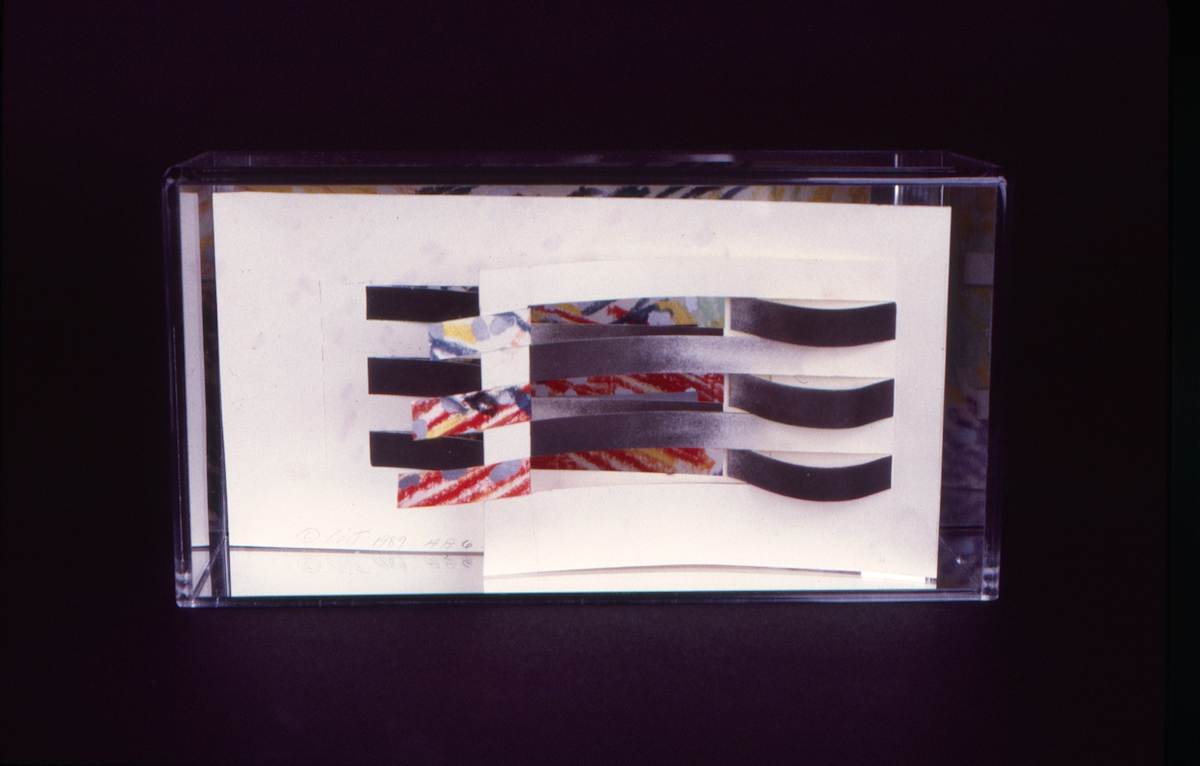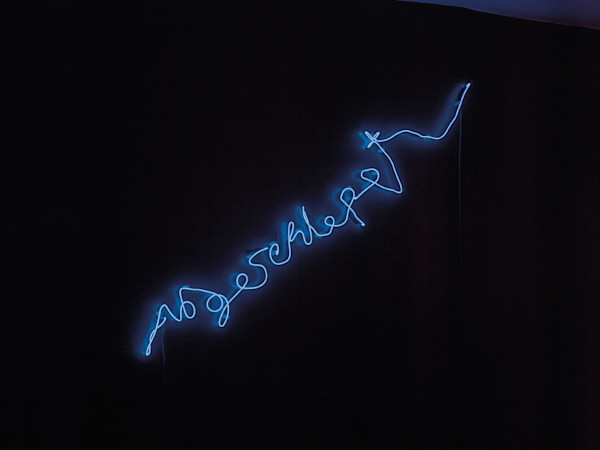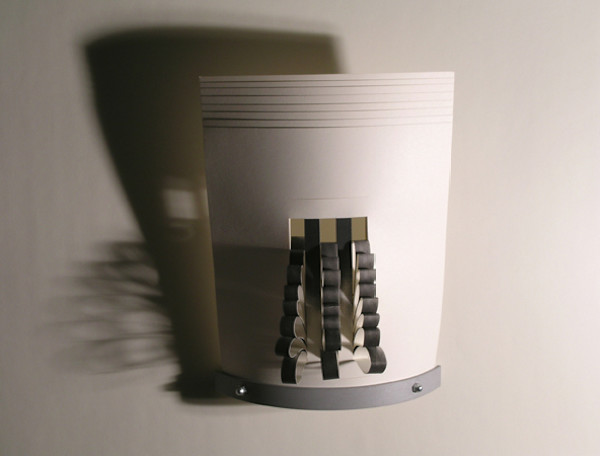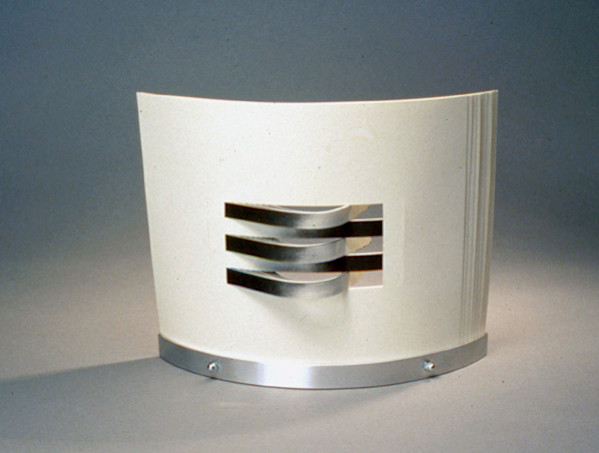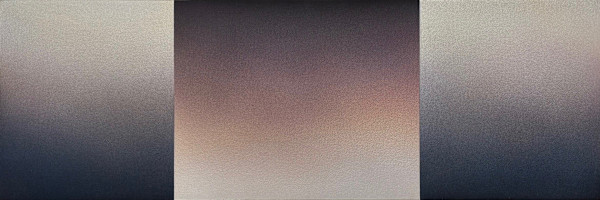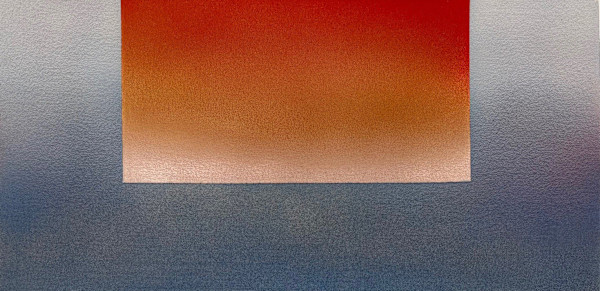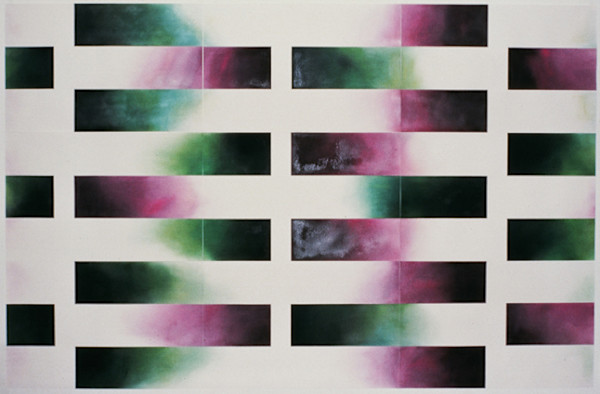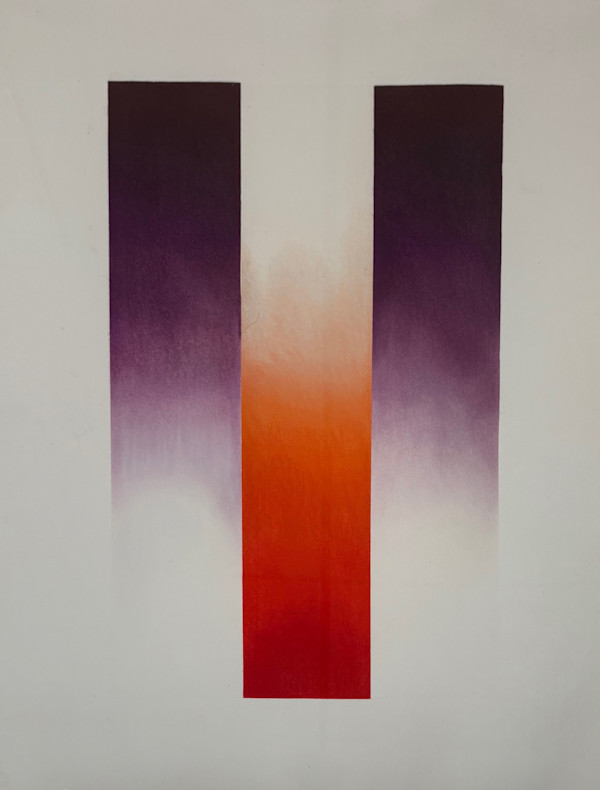ABLATE BOXES
1987-1989
Ablate means to wear away, leaving something else (like skin cells sloughing, or the nose cone or a plane). In language, there’s the ablative—a conditional tense, stating that you are either in a place that you have been in before, or referring to being from a place that you will return to.
Ablate is an extensive series of drawing/color works. They came about as a result of the Firstlight paintings, which had to be meticulously taped in order to control the oil paint. The Firstlight series was so precise and neat, you slid into their surfaces. The Ablate series, on the other hand, is the exposed skeleton of those smooth paintings, composed partially of paper, text, and the preserved tape with its colorful patches and painterly overflow. Most of the Ablate works had pieces hanging off of them.
Another essential element was the addition of Plexiglas boxes and with mirrors: at some point you would catch your own eye looking at yourself, and the pieces became portraits of the viewer / voyeur. I liked reading things backwards—the engagement, the demand. I was interested in the back, the internal structure, of a thing.
Art, Los Angeles: Southern California Home and Garden.
MADELIN COIT, by Angeline Vogl
May, 1989, p. 35
Accompanying image: 1st Light: Nawiliwili-II, 1987, oil on canvas, 5’x 2’
Accompanying image 2: headshot of artist
Light—its movement, gradations, its ability to change our perceptions—is an important element to almost every artist. But for Madelin Coit, it’s the primary impulse behind her powerful and beautiful paintings. “Like the ocean, the sky has waves and shadows,” exclaims Coit. “It’s full of color, full of changes. And I love a good thunderstorm—it’s explosive, forceful, exciting!”
Coit paints the sky—and what a sky. She juxtaposes luminous ribbons of every hue—silver, steel gray, azure, rose—in a joyous dance of liquid color. With a technique that must be the envy of every car-customizer in Los Angeles, she spray-paints layers of transparent oils—sometimes as many as 200 coats—interspersed with layers of clear lacquer that catch and hold the light, then bounce it back. Her “First Light” paintings, with titles like First Light: First Snow, First Light: Colorado, First Light: October, and First Light: Vernal Falls, evoke vivid memories of glorious dawns and skies in other times and places.
The techniques behind “First Light” led to the “Ablate” series, which incorporates narrow bands of color and strips of tape that are painted over and peeled back to create a metaphor for life’s changes. “The concept is one of peeling away layers but still retaining the essential person or thing underneath,” explains the artist. “It’s a moving forward, discarding of the old and revealing the new.”
In her most recent work, Coit has combined the meditative, almost idealized quality of the “First Light” pieces with revelatory techniques from “Ablate” to create a new series: Complex constructions of paper and paint, glitter and mirrors housed within Lucite boxes that invite the viewer to see, move around, and learn about the art in an intriguing, multidimensional way. “By showing incremental layers of information, the boxes are an effort to illustrate the learning process—how we come with our own information, begin to accrue and absorb new information as we see it, then change our point of view, our awareness, as we go along.”
Coit has always been deeply absorbed by the process of learning and of art. Now, as her work progresses, she’s beginning to reveal more of her self through her work, throwing off the pretenses of glossy surfaces and revealing the rough edges and varied hues underneath.
--Angeline Vogl

